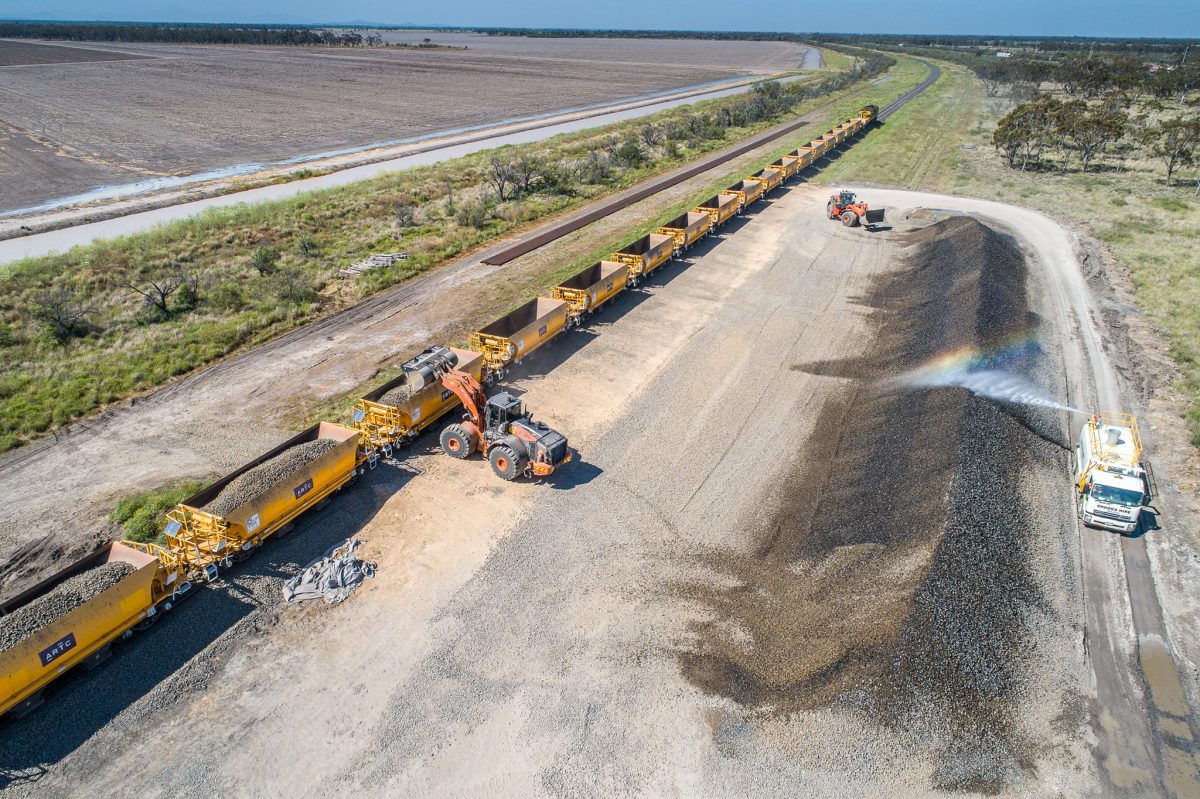
Construction is under way on the Narrabri-North Star section of Inland Rail in New South Wales. Photo: ARTC
MODELLING released as part of a CSIRO report has found the Inland Rail could cut freight transport costs by up to $213 million a year for 22 million tonnes of freight each year.
However, farming groups have questioned whether these findings would translate into bottom-line savings for Australian grain producers and their communities.
According to national industry body Grain Producers Australia (GPA), Inland Rail does not offer immediate savings for growers who need instant relief from high freight costs.
CSIRO’s Inland Rail Supply Chain Mapping Project report said existing road-based supply chains could save an average of $80.77 per payload tonne if they shifted to Inland Rail.
This compares with an estimated savings for grain at $48.87/t, and a $9.60/t reduction for existing rail users switching to Inland Rail on an alignment which is still under construction in northern New South Wales and southern Queensland.
The report identified key considerations for growers to shift to rail, ranging from service availability and reliability, the scale of freight needed for savings, and the capacity to use existing transport and handling infrastructure.
It also said a modal shift from road to rail would require the use of intermodal facilities such as a container-handling facility or a bulk-handling facility such as a grain terminal.
Potential reduction for growers
GPA chair Barry Large said the report showed some potential cost reductions for growers, but these claims needed to be matched by actual savings.
Despite the positives, Mr Large said the Inland Rail project did nothing to solve the current high freight cost pressures for growers.
“The CSIRO’s findings provide a light at the end of a long tunnel for the grain farmers and their communities who may benefit from the delivery of this rail infrastructure,” Mr Large said.
“However, this is a forecast future return only and right now, grain producers throughout Australia are paying the highest transportation costs.
“This is having a significant impact on our sustainability and competitiveness, and more needs to be done across the nation to address these constraints.”
Mr Large said GPA also supported the view of NSW Farmers that the $14.5-billion investment in Inland Rail needed more work to fully benefit agriculture and the regions.
NSW Farmers Inland Rail Taskforce head Adrian Lyons said for Inland Rail to provide the best cost-savings for farmers, the project required more connectivity with state infrastructure.
“There’s clearly a desire to simply lay a lot of track, but we’re saying we need the right tracks in the right place to actually deliver a benefit,” Mr Lyons said in a statement.
“The fact of the matter is that farmers want to get their products to market in an affordable and efficient manner, but without the east-west rail upgrades we’re not certain that Inland Rail will deliver on its promise.”
Mr Lyons said freight bottlenecks along the state’s east coast meant some farmers were still trucking their product to port rather than sending it by rail, a situation that could very well continue once Inland Rail is completed.
“The State Government has a huge part to play in this; we’ve already got these big freight bottlenecks at our ports that need to be removed.
“There must be benefit for all farmers in NSW out of this enormous expenditure, and there needs to be proper linkages right the way along the line.”
Supply chain needs boost
The 2019 study by AgriFutures, The Impact of Freight Costs on Australian Farms, said greater action was needed to reduce this significant cost in grain production.
The report said costs involved in moving commodities to and from farms and off-site storages are highest for Australian grains, representing 27.5 per cent of gross value of farm production, versus 1pc for Australian poultry farmers.
GPA deputy chair Andrew Earle said costs associated with freight were one of the biggest concerns for growers.
“Australian producers need access to a supply chain that provides the least-cost pathway to market and optimises our international competitiveness,” Mr Earle said.
“We’re calling for a comprehensive strategic analysis of the national grains supply chain and associated infrastructure costs such as road quality, rail connectivity and port access, to inform national decision-making on future investments.”



HAVE YOUR SAY